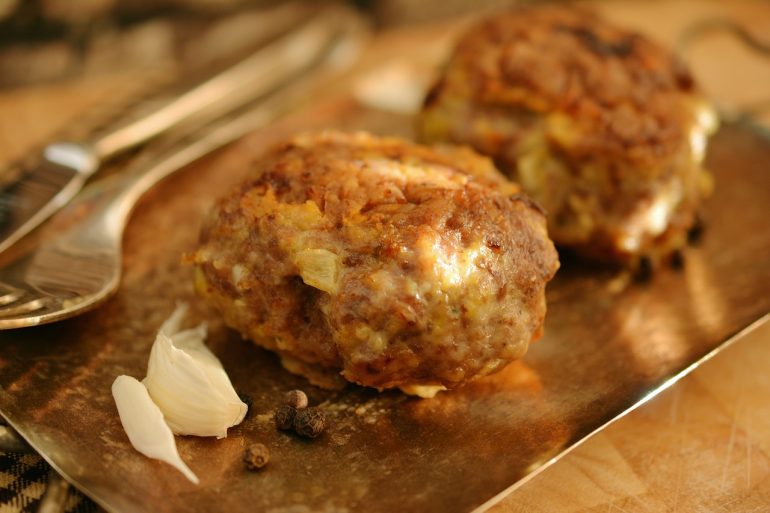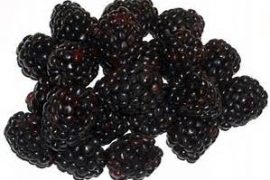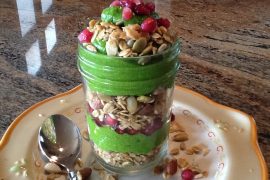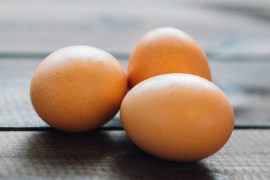The Meatball Shop in Manhattan sells dozens of meatballs, but some of their most popular varieties don’t actually contain meat.1 It’s not the only restaurant jumping on the meatless meatball trend. Furniture giant IKEA added veggie balls to their deli menus as an eco-friendly alternative to their high-carbon-footprint Swedish meatballs.2
The concept of meatless meatballs may sound like an oxymoron, but when done well, they’re delicious – light, crunchy, and zinging with surprising flavor combinations. If you already love meatballs, it’s time to discover meatless varieties. And if you have a limited diet – whether you’re vegetarian, vegan, or gluten-free – there’s nothing more versatile than a meatball. You can swap out ingredients to suit your dietary needs, use a variety of different cooking methods, and serve them on pasta, in soup, as sliders, and in numerous other ways. Read on to learn how to master the delightful meatless meatball.
The Formula for Meatball Magic
Create your own meatless meatball recipe by following this formula, adapted from Matt Frazier’s excellent veggie burger formula at NoMeatAthlete.com.3
Tools needed: food processor
Ingredients:
- 1 1/2 cups base ingredient (equivalent to one can of beans, drained)
- 2 cups diced vegetables
- 1 cup to 1 1/2 cups dry ingredient (the amount needed depends on the consistency of the other ingredients)
- 1/2 cup texture ingredient
- 2 tablespoons oil for sautéing the onions and garlic
- 3 tablespoons liquid flavorings
- 4 teaspoons seasoning, such as an herb and spice blend
- Cooked flavorings: 1/2 cup diced onion and 1 to 3 cloves garlic
- Salt to taste (the amount needed depends on the saltiness of other ingredients)
- 1 to 2 eggs (or an equivalent amount of an alternative binding ingredient)
Instructions:
- 1. Heat the oil in a large skillet and add the minced onion, diced vegetables, and seasoning. Sauté until the onions are soft and golden.
- 2. Add the minced garlic and sauté for a couple more minutes.
- 3. Transfer the cooked ingredients to the food processor. Add the base and liquid flavorings, and pulse just until everything is combined, but not puréed. Most people prefer chunkier meatballs.
- 4. Add the texture ingredient. Pulse until just combined.
- 5. Add 1 cup of the dry ingredient. Pulse until just combined.
- 6. Taste the batter; add salt as needed, probably 1/2 to 1 teaspoon, depending on the saltiness of the other ingredients. Pulse until just combined.
- 7. Lightly coat your hands in oil to keep the batter from sticking. Try to form a meatball. The consistency will vary slightly depending on the ingredients, and some adjustment may be necessary.
- 8. If the batter is too wet to mold, add more of the dry ingredient. If the batter is too dry, add a little water or oil. If the meatball doesn’t hold together, add one or two eggs or an equivalent amount of an alternative binding ingredient. (Eggs make meatballs more dense and spongy. Since most people prefer light, airy meatballs, it’s best to use the least number of eggs needed to bind everything together.4)
- 9. Form the meatballs. The size comes down to preference. Consider how you will serve them. For soups or curries, bite-size balls are usually best. For spaghetti and appetizer skewers, larger golf ball-size balls are often preferred.
- 10. Cook using your desired method.(Read on for options.)
How to Accommodate Dietary Restrictions
It’s easy to replace ingredients to suit different needs.
For gluten-free meatballs, instead of breadcrumbs for the dry ingredient, use:
- Almond flour
- Coconut flour
- Rolled oats
- Corn meal
For vegan meatballs, instead of using eggs as a binder, replace each egg with:
- 1 tablespoon flax or chia seeds plus 3 tablespoons boiling water, whisked together
- 1/4 cup avocado5
Instead of cheese as a texture ingredient, use:
- Tofu
- Cooked grains or rice
- Ground nuts
For paleo meatballs, instead of a bean or soy base, use:
- Ground nuts
- Sautéed mushrooms
For the dry ingredient, use:
- Almond flour
- Coconut flour
How to Make Breadcrumbs
There’s no need to buy packaged breadcrumbs for meatballs. They’re easy to make at home. You can use any type, but avoid using stale bread, which will make stale-tasting breadcrumbs. One slice of bread makes roughly 1/4 cup of breadcrumbs.6
To make them:
- 1. Cut the bread into crouton-sized pieces.
- 2. Arrange the bread pieces on an ungreased baking sheet in a single layer, leaving room between them.
- 3. Bake at 250º for 10 to 15 minutes, turning them over halfway through.
- 4. Remove from the oven and let cool.
- 5. Pulse in a food processor until the breadcrumbs have the desired consistency.7
Meatless Meatball Masterpieces
Once the meatballs are done, it’s time to turn them into a meal. Try these creative serving ideas.
Sliders: Serve on small buns and top with lettuce, shredded cabbage, and/or tomato slices. Dress with a favorite sauce, mayonnaise, mustard, or ketchup.
Po’ Boy: Serve on a hoagie roll or French baguette, cut in half, and top with coleslaw or lettuce, shredded cabbage, pickles, and tomato slices. Dress with remoulade sauce or another favorite sauce.
Soup: Add to Italian wedding soup, Albóndigas (Mexican meatball) soup, or any other meatball soup.
Pasta: Serve on spaghetti or another favorite Italian pasta and top with marinara or pesto sauce. Garnish with Parmesan cheese.
Appetizer: Serve on skewers and provide a complementary dipping sauce.
Wraps: Wrap in a tortilla and top with shredded lettuce, chopped cucumber, tomato, red peppers, and/or cilantro. Dress with a complementary sauce.
Pockets: Stuff inside pitas and top with diced cucumbers, tomatoes, and onions. Add feta cheese or a spoonful of hummus, and drizzle on a favorite sauce, such as tzatziki or tahini.
Curry: Braise in red, green, yellow, or Massaman curry with carrots, potatoes, and bell peppers. Serve over rice or noodles and top with cilantro, shredded basil, and/or chopped peanuts.
Move over meat: Meatless meatballs are here, and they’re versatile, healthy, eco-friendly, and bursting with flavor. With countless ingredient options, various cooking methods, and endless serving options, they can be made to suit any palate or occasion. Even meat lovers may soon long for meatless Monday.
Reprinted with permission from our friends at Fix.com/blog
About the author:
![abby-quillen-portrait[1]](http://myhealthmaven.com/wp-content/uploads/2017/03/abby-quillen-portrait1.jpg) Abby Quillen is the author of the novel “The Garden of Dead Dreams” and the editor of two anthologies. Her articles and essays have appeared in YES! Magazine and The Christian Science Monitor and on Common Dreams, Nation of Change, Reader Supported News, The Daily Good, Truthout, and Shareable.
Abby Quillen is the author of the novel “The Garden of Dead Dreams” and the editor of two anthologies. Her articles and essays have appeared in YES! Magazine and The Christian Science Monitor and on Common Dreams, Nation of Change, Reader Supported News, The Daily Good, Truthout, and Shareable.
Abby lives in Eugene, Oregon, with her family. When she’s not writing or working on her website, Abbyquillen.com, she grows vegetables and weeds, bikes and walks as much as she can, and jots down cute things her kids say.
Sources:
- http://well.blogs.nytimes.com/2011/11/14/the-meatball-shop-goes-vegetarian/?_r=0
- http://www.telegraph.co.uk/news/earth/environment/climatechange/10772303/Ikea-plans-green-meatballs-to-help-tackle-climate-change.html
- http://www.nomeatathlete.com/veggie-burger-recipe/
- http://www.huffingtonpost.com/bon-appetit/meatball-problems-the-8-m_b_3619087.html
- http://www.today.com/food/egg-substitutes-baking-veggie-burgers-scrambles-more-t23056
- http://www.howmuchisin.com/produce_converters/bread
- http://www.thekitchn.com/recipe-diy-drie-22456










